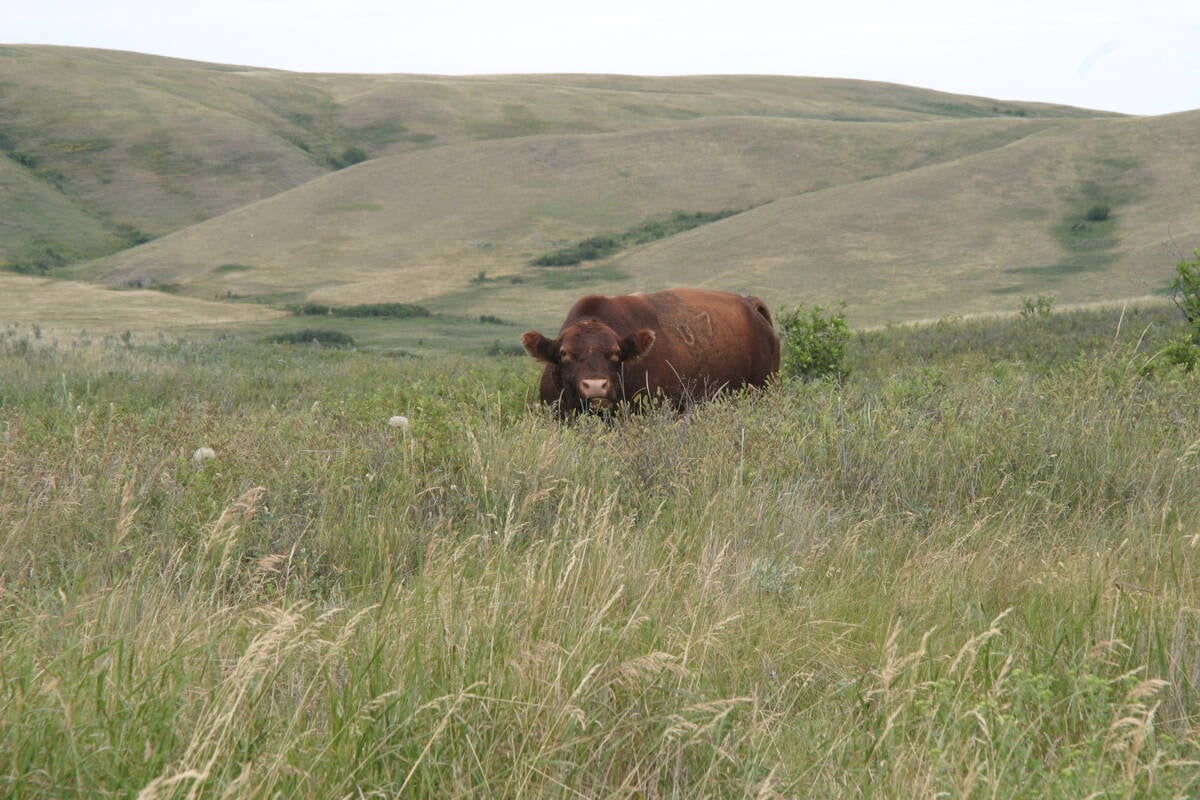LANIGAN, Sask. – It looks like a backyard swimming pool on steroids.
A vast expanse of white plastic lines a steeply inclined 3.7 metre deep hole, about one-third filled with slightly murky water.
On a blazing hot summer day, participants in the annual beef industry field day at the Termuende research farm might well like to jump in for a cooling dip.
But the water in this pool isn’t meant for swimming; it’s for watering thirsty cattle in nearby paddocks.
The pool is a research project designed to test the mechanics and economics of “harvesting precipitation” – the process of collecting and saving rainfall and runoff.
Read Also

Saskatchewan puts crown land auction on hold
Auctions of Saskatchewan crown lease land are once again on hold.
The study looks at saving precipitation as part of a livestock operation. But the man in charge of the project told farmers and ranchers attending the Western Beef Development Centre annual field day that its applications could go beyond that.
“If this works, you’ll be able to put water anywhere you want,” said Gordon Hultgreen, manager of soils and crops for the Prairie Agricultural Machinery Institute.
“I think this might be the beginning of something really big here, not just for livestock watering, but for farm water or any purpose where you need top quality water.”
The project is evaluating two separate collection systems.
The smaller of the two consists of a 26 sq. metre collection area, a gently sloped parcel of land covered with a plastic liner held down by rocks that funnels water to a 14 x 16 m holding pool with a storage capacity of 102,000 litres. It is designed to water 10 steers for 180 days.
The larger system consists of a 68 x 27 m collection area and a 30 x 18 m holding pool with storage capacity of 307,000 L. It is designed to water 30 steers for 180 days.
The holding cells will eventually include an aeration system of continuously bubbling compressed air to keep the water clear.
The system will be powered by two solar panels, with a 12-volt compressor for the aeration system and a 12-volt pump to move the water to the paddocks.
Researchers will monitor the rainfall and calculate how many litres are collected per inch of rain. The volume pumped out will be tracked and the evaporation rate calculated.
A snow fence will also be erected to increase the amount of runoff collected in the spring.
Once all the numbers have been gathered and the calculations completed, researchers will be able to provide farmers not only with the technical details, but also with a cost-benefit analysis of the system compared with well construction.
In an interview after the tour, Hultgreen said it was clear from questions and conversations he had during the demonstration tour that producers were intrigued by the idea.
“It really struck a chord of interest because a lot of these guys come from areas where water is almost always a problem,” he said. “In dryland country they’ll say they can’t have cattle because they’re not close enough to water.”
This allows a producer to put a dugout where he wants it to be, rather than where Mother Nature dictates.














